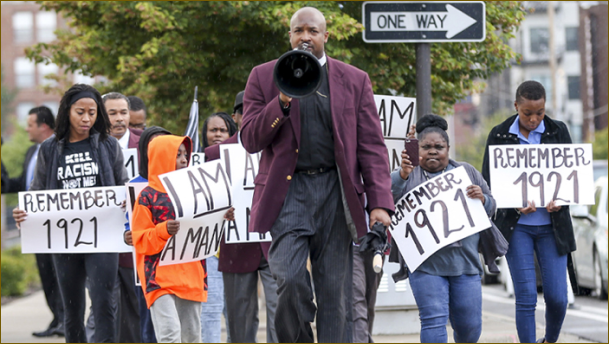Reports
The Case for Reparations
Source: Human Rights Watch
This report is largely based on research, as well as an analysis and review, of materials conducted from March through May 2020. These include the 2001 “Tulsa Race Riot Report,” numerous books on the massacre and its aftermath, news articles, law review articles, academic research papers, court records, and city planning documents. It also contains a lightly edited reprinting of several sections of an extensive 216-page Human Rights Watch report “Get on the Ground”: Policing, Poverty and Racial Inequality in Tulsa, Oklahoma,3 released in September 2019, which documents in detail systemic racial disparities in in Tulsa today.

The Color of Wealth
Source: The New School
This research brief summarizes findings in The Color of Wealth in Tulsa, OK, a report that is forthcoming from The Institute on Race and Political Economy at The New School and the Justice for Greenwood Foundation, Inc.1 In solemn commemoration of the Tulsa Race Massacre, this brief focuses on the disparities in wealth between White and Black families in the Tulsa, Oklahoma Metropolitan Statistical Area (hereafter referred to as Tulsa).
Failed Justice
Source: Human Rights Watch
This article sheds light on the permanent damage left by The Tulsa Massacre, and even though this event took place 100 years ago, the city and state’s idea of reparations for the survivors and descendants “foster cultural tourism.” All 3 survivors have sued the city of Tulsa for appropriating the horrific events of the massacre “for tourism and economic opportunities.” This article goes into depth about the survivors ignored, a lack of effective outreach, appropriation of Black Wall Street heroes and history, community mistrust, and continuing racial disparities that reflect past and ongoing discrimination.
